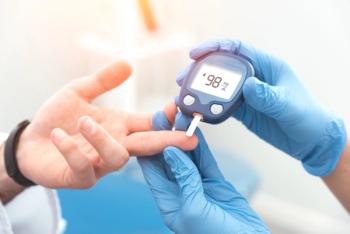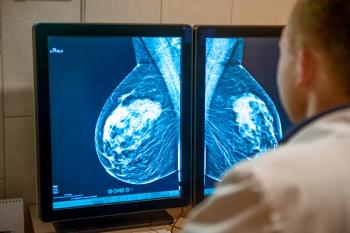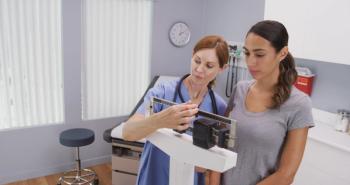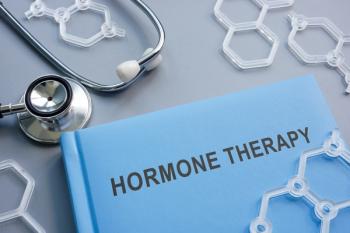
While rates of exclusive breastfeeding have slightly increased between 2016 and 2022, they remain under the Healthy People 2030 goal.

While rates of exclusive breastfeeding have slightly increased between 2016 and 2022, they remain under the Healthy People 2030 goal.

In a recent study, higher preterm birth rates were reported among Alaska Native, Black, and Pacific Islander patients with public insurance.

Respondents of a survey conducted by Contemporary OB/GYN shared their practices for RSV counseling and their thoughts on how awareness may be improved.

A recent study reveals that localized estrogen treatment significantly improves vaginal atrophy and vaginitis symptoms in postmenopausal women, offering new insights into tailored hormone therapies.

Review some of the top stories from the Contemporary OB/GYN website over the last week, and catch up on anything you may have missed.

In a recent study, women with gestational diabetes mellitus were often older, had a higher body mass index, and more often experienced adverse pregnancy outcomes.

In a recent study, adolescents and young adults with prediabetes were more likely to experience gestational diabetes during their first pregnancy.

In a recent study, similar bone health results were reported between oral contraceptive users with and without prune consumption, as well as nonusers.

In a recent study, patients with a positive response to the Seven-Question Family History Questionnaire were more likely to present with a pathogenic or likely pathogenic variant in the BRCA1 and BRCA2 genes.

In a recent study, significantly increased rates of both spontaneous and indicated preterm birth were found in women with systemic lupus erythematosus.

In a recent global review, significant annual increases in the mean term birthweight were reported, indicating worldwide public health impacts.

In a recent study, similar rates of live birth and other pregnancy outcomes were reported between patients receiving double- vs single-layer uterine closure following cesarean delivery, indicating a lack of superiority from a single method.

A recent study found no significant difference in live birth rates between blastocyst and cleavage stage embryo transfers in women with 4 or more embryos during in vitro fertilization.

In a recent study, infants of mothers with an influenza infection during pregnancy were significantly more likely to experience febrile seizures, but not epilepsy.

In a recent study, the odds of miscarriage, fecundability, and subfertility were significantly increased among patients with a body mass index outside the normal category during the preconception or early-pregnancy period.

Review some of the top stories from the Contemporary OB/GYN website over the last week, and catch up on anything you may have missed.

A recent study reveals that pregnancy-specific factors influence aspirin pharmacokinetics and pharmacodynamics, suggesting the need for tailored aspirin dosing to optimize outcomes in preventing preeclampsia.

In a recent study, a significant improvement in the average quality-adjusted life years gained was reported following BRCA1 testing during obstetrical prenatal carrier screening.

A recent study shows that adding metronidazole to cefazolin significantly lowers the risk of surgical site infections in gynecologic cancer surgeries, enhancing patient outcomes.

In a recent study, very preterm birth rates were reduced during COVID-19 lockdown periods vs prepandemic periods.

In a recent study, reported rates on emergency department utilization for hypertensive disorders of pregnancy and the postpartum period were higher in 2020 than 2006, with rates especially high among non-Hispanic Black, Hispanic, and Asian patients.

New research shows fezolinetant significantly reduces the frequency and severity of hot flashes in Hispanic women, offering a safer alternative to hormone replacement therapy.

Fezolinetant offers women a groundbreaking, non-hormonal solution to manage menopause symptoms like hot flashes and sleep disturbances, supported by large clinical trials.

A new study highlights gestational hypertension as a significant predictor of cardiovascular disease in menopausal women, challenging previous assumptions about preeclampsia’s role.

Research reveals that environmental exposures and PTSD from Gulf War service significantly increase the likelihood of early menopause, highlighting the need for targeted reproductive health care for women veterans.

Vanessa Muñiz presents research comparing clinical hypnosis and cognitive behavioral therapy for treating hot flashes, revealing that hypnosis significantly reduces frequency and improves quality of life.

Lauren Streicher, MD, advocates for practical, individualized solutions for postmenopausal sexual dysfunction, emphasizing increased vascularization, stimulation, and addressing related symptoms.

At the 2024 Annual Meeting of The Menopause Society, the positive safety and efficacy data of fezolinetant against sleep disturbances from the SKYLIGHT 1 and 2 trials was presented.

The phase 3 OASIS trial presented at the 2024 Annual Meeting of The Menopause Society displayed significant improvements in the frequency of moderate-to-severe vasomotor symptoms among patients receiving elinzanetant.

Low rates of hormone therapy use have been reported among midlife women, stagnating after decreases in the immediate aftermath of the Women’s Health Initiative.